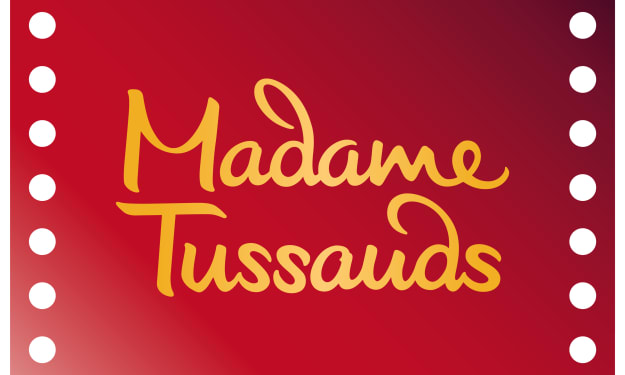
Kristen Barenthaler
Bio
Curious adventurer. Crazed reader. Archery fanatic. Amateur author. Librarian.
Instagram: @kristenbarenthaler
Facebook: @kbarenthaler
GoodReads: https://www.goodreads.com/author/show/15101108.Kristen_Barenthaler
Stories (86/0)
"And Then There Were None" by Agatha Christie - Book Review
"Ten . . ." Ten strangers are lured to an isolated island mansion off the Devon coast by a mysterious "U.N. Owen." "Nine . . ." At dinner, a recorded message accuses each of them, in turn, of having a guilty secret, and by the end of the night, one of the guests is dead. "Eight . . ." Stranded by a violent storm and haunted by a nursery rhyme counting down one by one . . . one by one, they begin to die. "Seven . . ." Who among them is the killer, and will any of them survive? (Goodreads)
By Kristen Barenthalerabout a year ago in Geeks
"Ozark Dogs" by Eli Cranor - Book Review
Anticipated release date: April 4th, 2023! Eli Cranor's Ozark Dogs is a thrilling read about family, town politics, and Southern justice. Personally, I found it enticing, enriching, and engrossing to read. The short chapters are all packed full of action, information, and engaging storylines. Cranor is also the author of Don't Know Tough, which was given an award for the Peter Lovesey First Crime Novel Contest.
By Kristen Barenthalerabout a year ago in Geeks
“The Killer Across the Table” by John Douglas & Mark Olshaker
John Douglas is best known for being the profiler who created much of what we now know as criminal profiling. He has interviewed many of the most well-known criminals, including Ed Kemper (the Coed Killer), Charles Manson, Ted Bundy, Jeffrey Dahmer, and Dennis Rader (the BTK Strangler). With these interviews and many others, he and his coworkers created the Crime Classification Manual, which is still revised and used today for training criminal profilers and by all sizes of police forces. Douglas retired after over twenty-five years of service with the FBI and began his later life careers, as a writer, a teacher, a producer, and occasionally an assistant profiler. Even though he is retired, Douglas often gets asked to help with profiling cases for movies, TV shows, books, and other police forces looking for a fresh break in an unbreakable case.
By Kristen Barenthalerabout a year ago in Geeks
'Veronica Mars:' The Newest Blast from the Past
Chances are good that you know the name Kristen Bell, unless you're a 100+-year-old vampire without access to TV. Kids and their extremely-annoyed-by-this-point parents know her as Princess Anna in Disney's Frozen. Sitcom fanatics know her as Eleanor Shellstrop on NBC's The Good Place. Some might even know her from her more adult movies, like Like Father, Bad Moms, andBad Moms Christmas among others. But true Bell fans know her first-and-foremost as Veronica Mars from the same-named CW TV show (now a Hulu original as of season four, released July 19, 2019).
By Kristen Barenthaler5 years ago in Geeks
Movie vs Book: 'To All The Boys I've Loved Before'
When adapting a book into a movie, there's bound to be some changes along the way. Character castings may turn out different than the author envisioned or a subplot may be excluded for time. So what's the difference between Jenny Han's To All the Boys I've Loved Beforeand Netflix's "To All the Boys I've Loved Before"?
By Kristen Barenthaler5 years ago in Geeks
'Extremely Wicked, Shockingly Evil, And Vile'–Movie Review
It's no secret that Netflix loves feeding into the world's strange fascination with serial crime. Making a Murderer, Conversations with a Killer, Inside the Criminal Mind, and tons of other true crime shows will pop up on your recommended page... especially after you've watched their newest crime movie, Extremely Wicked, Shockingly Evil, and Vile.
By Kristen Barenthaler5 years ago in Criminal
Are You 'Directionally Challenged'?
Candace King and Kayla Ewell (both of The Vampire Diaries fame) have a podcast called Directionally Challenged, and let me tell you, we're all directionally challenged, so get in your car, or get out your headphones, and catch up because they're here to help their fellow women (and maybe a few men) get through the difficult parts of life.
By Kristen Barenthaler5 years ago in Geeks
Being an Archery Instructor Completely Changed My Life
It's not like anyone really plans to become an archery instructor, or at least, I didn't. It more just fell into my lap when I was training to be a camp counselor, and happened to be the best during our archery instructor training (thanks to USA Archery, but more on them later). So, after being surprised into being the archery instructor, I got another surprise. We teach to a camp of all Autistic children, as well as multiple other camps, which meant I had to have multiple sets of equipment to keep track of, and be prepared for, setting up multiple ranges at each camp.
By Kristen Barenthaler5 years ago in Education
Why Massachusetts Should Have Its Own Madame Tussaud's
We've all seen the creepily life-like wax figures featured at Madame Tussaud's, whether it be at their Nashville, New York, or Las Vegas museums. But why doesn't Massachusetts yet have its own museum? Patriot Place, Boston, and Cape Cod are all waiting with perfect locations for visiting tourists to learn our history.
By Kristen Barenthaler5 years ago in Wander













